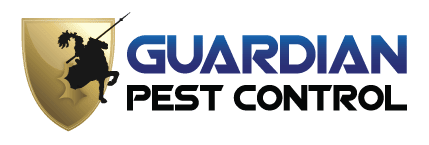Premier Vole Control Utah County Specialists
Premier Vole Control Utah County Specialists
Blog Article
Comprehensive Parasite Control Solutions to Combat Vole Infestations
Vole problems can rapidly escalate, triggering damage to yards, landscapes, and yards. The influence of these little rats can be speedy and substantial, necessitating a thorough parasite control method to efficiently take care of the situation. Recognizing the behavior and biology of voles is critical in developing an incorporated approach that not just addresses the present problem but likewise prevents future incidents. By using a combination of recognition, exemption, habitat, and capturing modification methods, specialist pest control services can use a customized remedy to combat vole invasions. The essential lies in carrying out a well-shaped strategy that not just eliminates existing voles but likewise develops lasting control measures to protect versus future invasions.
Vole Recognition and Assessment
When inspecting for voles, look for their characteristic runways, burrow openings, and nibbled plant roots. Chomped plant origins are an additional indicator of vole activity, indicating their existence and prospective damage to plants. By precisely recognizing these indications, pest control professionals can tailor their techniques to efficiently handle vole invasions and safeguard gardens and yards from further injury.

Capturing and Removal Methods
Efficient bug control approaches for managing vole infestations typically entail using specialized capturing and elimination strategies. Capturing is an extensively made use of approach to record voles and transfer them away from residential or commercial properties.
When setting up traps, it is essential to ensure they are placed appropriately and baited with vole-preferred food resources like peanut butter, seeds, or fruits. On a regular basis examining the catches is important to promptly remove recorded voles and protect against distress or injury to the pets. As soon as caught, voles must be moved to appropriate habitats far from human homes to prevent re-infestation.
Furthermore, exemption methods, such as mounting obstacles or secure fencing underground, can assist prevent voles from accessing certain areas. Appropriate disposal of caught voles and regular monitoring of vole task are essential components of an effective trapping and removal approach in vole problem monitoring.
Exemption and Barrier Techniques

To effectively apply exemption and barrier approaches, a thorough inspection of the home is vital to recognize vole activity and potential entrance points. By resolving these vulnerabilities and implementing targeted exemption and barrier procedures, home owners can dramatically minimize the risk of vole problems. Regular upkeep and monitoring are critical to make sure that barriers stay intact and reliable in preventing voles from accessing vulnerable locations. Ultimately, a mix of capturing, removal, and aggressive exclusion procedures can help successfully manage vole populations and protect properties from problems.
Environment Alteration and Avoidance
To mitigate vole infestations, habitat modification and prevention techniques concentrate on changing the atmosphere to prevent vole habitation. One efficient approach is lowering the schedule of food resources by maintaining yard cut short, eliminating weeds and particles, and keeping a clean lawn. Voles are drawn in to areas with dense greenery and clutter, so creating open spaces can aid hinder them from resolving in the location. Furthermore, minimizing excess wetness by repairing leaky pipes, ensuring correct water drainage, and eliminating standing water can make the atmosphere less hospitable for voles.
Incorporating obstacles like crushed rock borders or cord mesh underground can likewise avoid voles from tunneling into gardens or lawns. These physical barriers disrupt their capability to passage and gain access to desired areas. Planting vole-resistant vegetation and making use of vole-repellent techniques such as castor oil-based deterrents can better prevent vole activity. By applying these habitat alterations and prevention actions, residential or commercial property owners can proactively decrease the threat of vole infestations and safeguard their outdoor areas from damages. vole control utah county.
Surveillance and Follow-Up Strategies

Follow-up methods involve reviewing the dealt with areas to inspect for any kind of signs of vole activity. Checking stations, traps, and aesthetic evaluations her latest blog are generally used Homepage techniques to review the success of the pest control procedures. By regularly examining these locations, parasite control experts can rapidly determine any kind of resurgence of vole activity and take positive actions to resolve the issue before it intensifies.
Furthermore, recording the outcomes of surveillance and follow-up activities is important for tracking the development of vole problem control with time. These documents help in identifying patterns, examining the performance of various control approaches, and making informed decisions for future insect administration methods. Routine follow-up procedures not just aid in protecting against vole re-infestations yet additionally add to the total success of parasite control initiatives.
Verdict
To conclude, comprehensive pest control solutions are essential for properly combating vole problems. By recognizing and checking vole populations, implementing capturing and elimination methods, utilizing exclusion and obstacle techniques, modifying environments, and applying tracking and follow-up techniques, homeowner can effectively manage and protect against future invasions. It is important to deal with vole problems immediately to prevent damages to building and prospective health threats.
By utilizing a mix of recognition, capturing, habitat, and exemption alteration methods, professional bug control services can use a tailored option to combat vole invasions (utah vole control). By accurately determining these indicators, insect control specialists can tailor their approaches to efficiently take care of vole infestations and secure yards and lawns from more harm
Efficient parasite control strategies for handling vole problems frequently include using specialized trapping and try this removal methods.To mitigate vole invasions, environment alteration and avoidance strategies focus on changing the setting to discourage vole habitation.Routine tracking and follow-up treatments are essential in maintaining vole invasion control actions and ensuring long-term success in insect administration.
Report this page